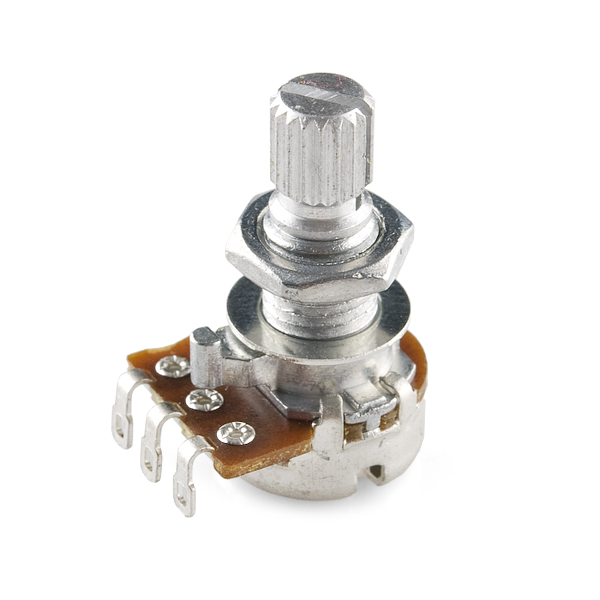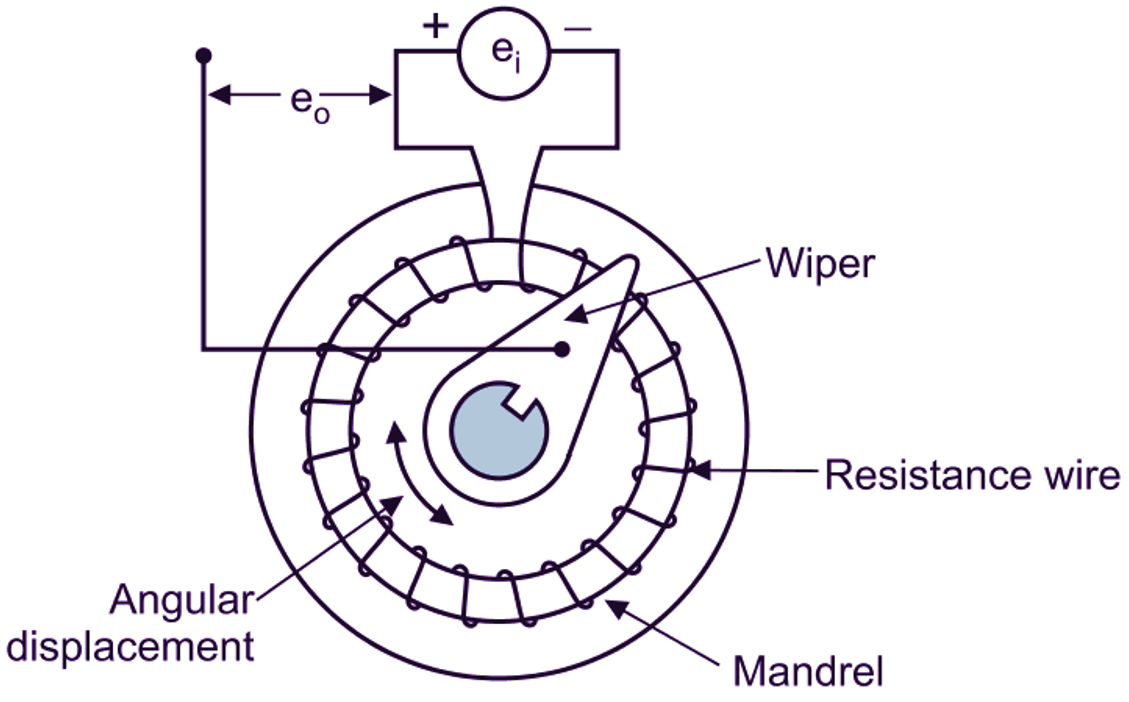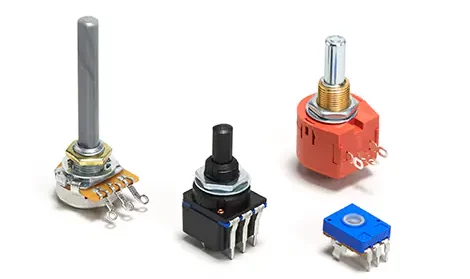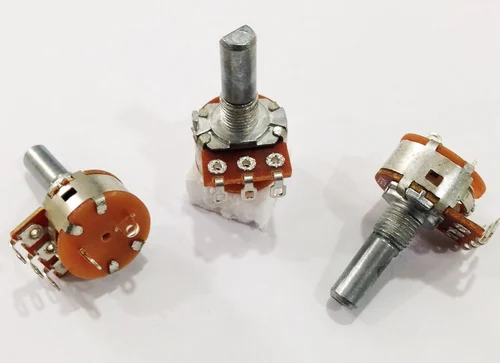What is Rotary Potentiometer – Welcome to Linquip Blog. Today and in this article, we are going to answer the question “What is a Digital Potentiometer?”. Potentiometers are actually a resistor, an electrical device that resists the flow of electrical current. In the digital era, we can find a variety of “digital resistors” for our everyday applications. This article is about digital potentiometers to explain how they work and where they are used.
Our team gathered all of the necessary information on this topic to eliminate the need for reading diverse content on other websites. Stay with us until the end to find the answer to your question on this topic. We have a long journey ahead of us, so take a deep breath, sit back, and keep reading this article until the end.
In order to provide as much information about the rotary potentiometers as possible, Linquip makes every effort. Linquip provides the best sources of information regarding this electrical equipment. You can always reach Linquip experts for any questions or concerns you may have regarding potentiometers. Linquip’s article titled “What Is Electrical?” is an excellent place to start. You can gain a better understanding of industrial electrical equipment.
You will first need to register on the Linquip platform as a Linquip Expert if you want to take advantage of all the Linquip platform has to offer. It can be very convenient for you to create a Linquip account that allows you to show the skills you have in the area of industrial equipment in a way that will ensure that it matches the needs of the industry. Would you be willing to write a guest post on the Linquip website? Linquip’s Guest Posting feature enables you to directly publish your content on our platform.
What Is a Digital Potentiometer?
As it is mentioned before, a potentiometer is a variable resistor that can be used in a circuit to control resistance, current, and voltage through a circuit to attain a certain output. The potentiometer is just a variable resistor that you all might have seen in your physics laboratory, consisting of a metal coil wound on a cylindrical platform that consists of a sliding contact that is used to control the resistance of a circuit.

What is Rotary Potentiometer?
So far, we have given a brief description of potentiometers. This device has types, the most important of which are rotary potentiometer and linear potentiometer. In this article, we do not deal with linear ones and only describe the rotary type. What is important to know is that although the basic constructional features of these potentiometers vary, the working principle of both of these types of potentiometers is the same.
The rotary type potentiometers are used mainly for obtaining adjustable supply voltage to a part of electronic circuits and electrical circuits. The volume controller of a radio transistor is a popular example of a rotary potentiometer where the rotary knob of the potentiometer controls the supply to the amplifier.
This type of potentiometer has two terminal contacts between which a uniform resistance is placed in a semi-circular pattern. The device also has a middle terminal which is connected to the resistance through a sliding contact attached to a rotary knob. By rotating the knob one can move the sliding contact on the semi-circular resistance. The voltage is taken between a resistance end contact and the sliding contact. The potentiometer has also been named the POT in short. POT is also used in substation battery chargers to adjust the charging voltage of a battery. There are many more uses of rotary-type potentiometers where smooth voltage control is required.
How Does a Rotary Potentiometer Work?
Potentiometers work by varying the position of a sliding contact across a uniform resistance. In a potentiometer, the entire input voltage is applied across the whole length of the resistor, and the output voltage is the voltage drop between the fixed and sliding contact. A rotary potentiometer has two terminals of the input source fixed to the end of the resistor. To adjust the output voltage the sliding contact gets moved along the resistor on the output side.
This kind of potentiometer includes two terminal contacts where a consistent resistance can be located in a semi-circular model. And also, it includes a terminal in the middle that is allied to the resistance using a sliding contact that is connected through a rotating knob. The sliding contact can be turned by turning the knob over the half-circular resistance. The voltage of this can be obtained among the two contacts of resistance & sliding. These potentiometers are used wherever level voltage control is necessary.

The Characteristics of Potentiometers
All the Potentiometers have some characteristics. These characteristics also apply to the rotary ones which are listed in the following:
- They are extremely accurate as they work on the evaluating technique rather than the technique of deflection to determine the unidentified voltages.
- they determine the balance point otherwise null which does not need power for the dimension.
- The potentiometer working is free from the resistance of the source as there is no flow of current throughout the potentiometer as it is balanced.
- The main characteristics of these potentiometers are resolution, taper, marking codes & hop on/hop off resistance.
A Brief Look at some of the Advantages and Disadvantages of (Rotary) Potentiometers
Advantages
- There is no chance of getting errors because it uses the zero-reflection method.
- The standardization can be done by using a normal cell directly.
- It is used to measure small emf’s due to highly sensitive.
- Based on the requirement, the potentiometer length can be increased to get accuracy.
- When the potentiometer is used in the circuit for measurement then it doesn’t draw any current.
- It is used to measure the inner resistance of a cell as well as compare the e.m.f. of two cells but by using a voltmeter, it is not possible.
Disadvantages
- The potentiometer usage is not convenient.
- The cross-section area of the potentiometer wire should be consistent so that is not possible practically.
- While doing an experiment, the wire temperature should be stable, but this is hard due to the current flow.
- The main drawback of this is, it needs a huge force to move the wiper or sliding contacts. There is erosion because of the movement of the wiper. So, it decreases the transducer’s life.
- Bandwidth is limited.
What Are the Three Kinds of Potentiometers?
Linear potentiometers, Rotary Potentiometers, and Digital Potentiometers are the three main types of potentiometers. Every type of potentiometer has its own unique applications. Rotary potentiometers, however, are the most common type.

How Do Linear and Rotary Potentiometers Differ?
Essentially, the only difference between linear and rotary potentiometers is that linear potentiometers have resistive strips on straight tracks and rotary potentiometers have them on circular tracks.
FAQs about Rotary Potentiometer
What is the purpose of rotary potentiometer?
A rotary potentiometer is a rotary-movable electrical resistor with adjustable resistance. This enables the implementation of control procedures in different electrical or electronic systems, such as the volume control of multimedia devices.
What is the accuracy of rotary potentiometer?
There is some angular change in potentiometers. Tolerances can range from 0.01° to 2° based on size, angle, and element material.
What changes with a potentiometer when you move the rotary knob?
The resistance in a potentiometer can fluctuate either linearly or logarithmically as you turn the knob. The taper refers to how the resistance shifts. In a linear taper potentiometer, no matter where the knob is turned, a specific amount of rotation will result in a specific change in resistance.
What are the characteristics of rotary potentiometer?
Since there is no current flowing through the balanced potentiometer, its operation is free from the source’s resistance. These potentiometers’ primary features are resolution, taper, marking codes, and hop on/hop off resistance.
Can potentiometer measure high voltage?
The potentiometer figures out the voltage or potential difference by comparing an unknown voltage to a known voltage. Only voltages up to roughly 1.5 V may be measured with a DC potentiometer. Therefore, a volt-ratio box is used to lower the unknown voltage when a high voltage is provided so that a dc potentiometer can measure it.
Conclusion
The present article was an attempt to answer the question “What Is a Rotary Potentiometer?” and deliver all the essential information about how it works and where it is used.
What is important to know is that although the basic constructional features of these potentiometers vary, the working principle of both of these types of potentiometers is the same. The rotary type potentiometers are used mainly for obtaining adjustable supply voltage to a part of electronic circuits and electrical circuits.
If you have any experience of using single and two–stage compressors, we will be very glad to have your opinions about their performance in the comments on our website Linquip. Moreover, if you have any questions about this topic, you can sign up on our website and wait for our experts to answer your questions. Hope you enjoyed reading this article.
Download What is Rotary Potentiometer? PDF
By clicking on this link, you will be able to download the entire content of this article as a PDF file.
linquip.com-What is Rotary Potentiometer What It Does for Us
Watch Videos about What is Rotary Potentiometer
For more information about What is Rotary Potentiometer, watch this video about Potentiometers.
Buy Equipment or Ask for a Service
By using Linquip RFQ Service, you can expect to receive quotations from various suppliers across multiple industries and regions.
Click Here to Request a Quotation From Suppliers and Service Providers
Read More In Linquip
- Difference Between Potentiometer and Voltmeter
- Ultimate Guide: What Is Linear Potentiometer
- What Is a Digital Potentiometer? An Explanation of the Working Principle and Advantages
- Potentiometer Connection, Working, Circuit Diagram, & Wiring Guide
- What is the Difference Between Potentiometer and Rheostat?
- Types of Potentiometers: The Ultimate Guide to Learning About Different POT Types
- What is Potentiometer? The Ultimate Guide to Knowing Potentiometers And Their Construction



